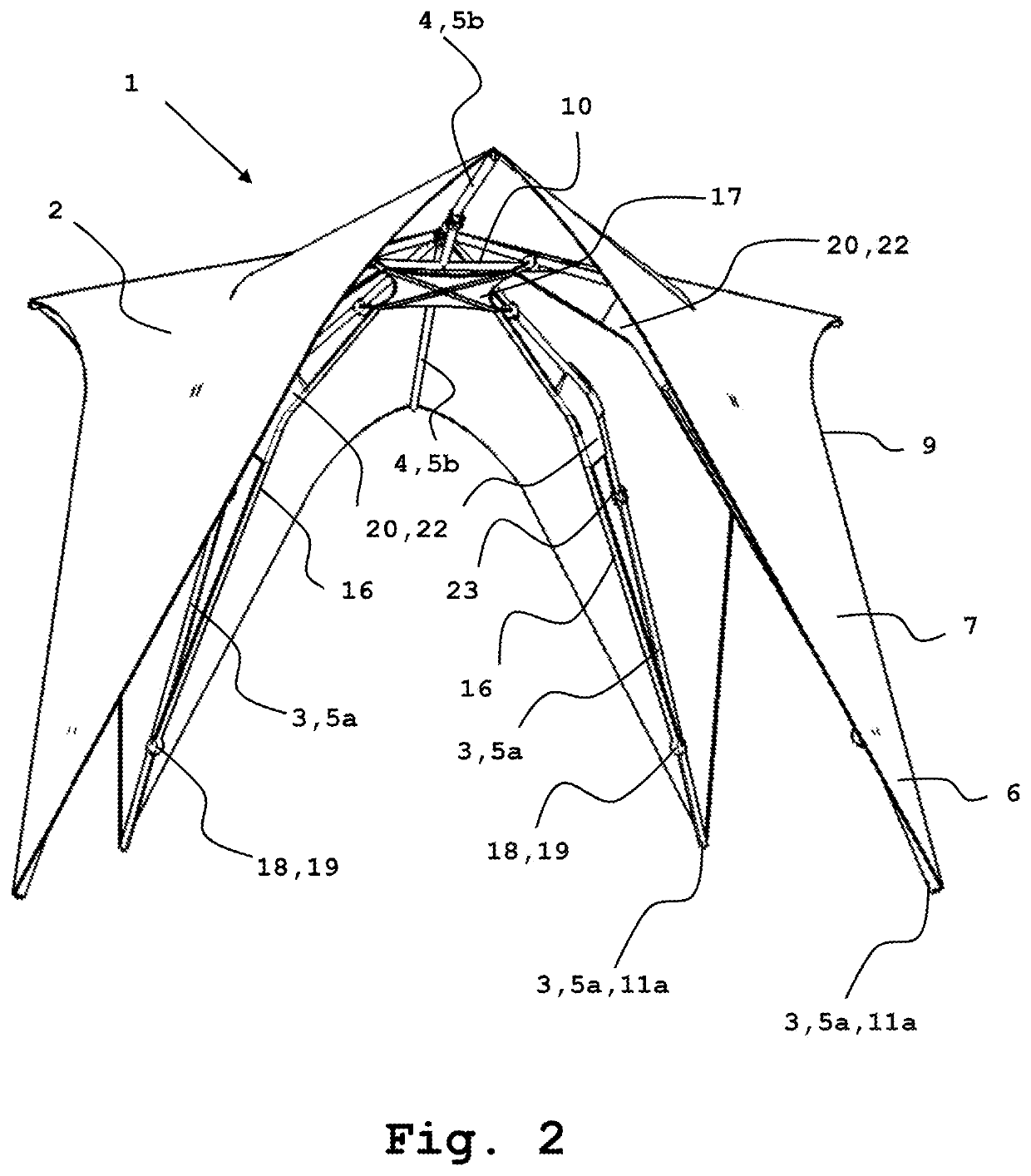Gazebo or tent
a gazebo and tent technology, applied in tents/canopies, building types, constructions, etc., can solve the problems of limited stability, easy assembly of tents, and inability of users in particular to move upright in tunnel tents, etc., to achieve sufficient stability and improve utilization.
- Summary
- Abstract
- Description
- Claims
- Application Information
AI Technical Summary
Benefits of technology
Problems solved by technology
Method used
Image
Examples
Embodiment Construction
[0058]FIG. 1 schematically shows an inventive, exemplary gazebo 1. The latter has a two-dimensional cover 2 and a rod assembly 3,4, which is connected to the cover 2 and is suitable and intended to hold the cover 2 in a three-dimensional shape.
[0059]The rod assembly 3,4 is formed of two parts, a main rod assembly 3 and a secondary rod assembly 4. In this case, the main rod assembly 3 has one or more resilient rods 5a, which are suitable and intended to connect in each case end portions 6 of two opposing gussets 7 of the cover 2 and thereby form supporting feet 11 a for the gazebo 1.
[0060]In contrast, the secondary rod assembly 4 has one or more resilient rods 5b, which are suitable and intended to connect in each case center regions 8 of the edge 9 between two adjacent gussets 7 of the cover 2 with each other.
[0061]In order to keep the gazebo 1 stable in its assembled structure, the rod assembly 3,4 has at least one tensioning element 10, which is suitable and intended to increase a...
PUM
 Login to View More
Login to View More Abstract
Description
Claims
Application Information
 Login to View More
Login to View More - R&D
- Intellectual Property
- Life Sciences
- Materials
- Tech Scout
- Unparalleled Data Quality
- Higher Quality Content
- 60% Fewer Hallucinations
Browse by: Latest US Patents, China's latest patents, Technical Efficacy Thesaurus, Application Domain, Technology Topic, Popular Technical Reports.
© 2025 PatSnap. All rights reserved.Legal|Privacy policy|Modern Slavery Act Transparency Statement|Sitemap|About US| Contact US: help@patsnap.com



